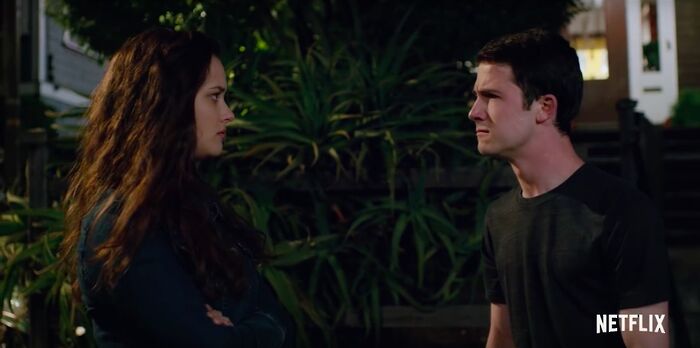A bluffer’s guide to classic Hollywood
Through the examination of three classic movies, Nicole Tamer puts her degree in film to terrific use by teaching us the subtle art of pretentious cinematic conversation

Who hasn’t been stuck in a conversation about some obscure film where words like ‘depth of field’ and ‘mise-en-scène’ were thrown at you? But do not despair. Armed with this bluffer’s guide to classical Hollywood – chock full of obscure facts and fancy buzzwords – you’ll be sure to impress even the biggest film aficionados.
Citizen Kane (1941)
No film buff can escape this monster of a classic. Despite being Orson Welles’ directorial debut, Citizen Kane is often described as the most influential film of the 20th century. For any conversation about this Hollywood heavyweight, nonlinear narrative and deep focus are the clever keywords to drop in the moment an opening arises.
Through a large depth of field, foreground, middle-ground and background can all be in focus at the same time. This cinematographic technique, known as deep focus, best mirrors the way in which the human eye sees, and has the effect of drawing the viewer into a richer and more life-like cinematic world. Kane is also distinguished for its use of nonlinear narrative: we begin with the mysterious word ‘rosebud’, uttered by the eponymous newspaper tycoon with his dying breath, and work back and forth through Kane’s rise to wealth and eminence. The film was based on the life of William Randolph Hearst, who was reportedly so angered by the portrayal that he tried (but, happily for us, failed) to destroy Welles’ career. Think Trump if he were around in the ’40s, but substitute feather-ruffling tweets for film.
Casablanca (1942)
“Citizen Kane is considered to be a greater film, but Casablanca is more loved,” argued the great critic Roger Ebert. The film certainly continues to impress today, with its romantic love triangle and “exotic” backdrop (which was shot entirely on Hollywood sets). This wasn’t the only trickery – Ingrid Bergman was filmed using a softening filter and catch lights to make her features sparkle. Old-fashioned photoshop in action! Buzzwords to have at the ready: continuity editing, montage, and chiaroscuro lighting.
Humphrey Bogart is Rick, a nightclub owner in French-ruled Morocco during WWII. His old flame Ilsa, now married, walks through the door one night. Suddenly, Rick finds he must choose between the well-being of all mankind and his one true love.
Gone with the Wind is a rare example of a film actually known by its producer
Director Michael Curtiz used chiaroscuro lighting to underscore his characters’ psychological depth through light and shadow. Furthermore, by cutting to maintain continuous narrative action, a technique termed continuity editing, streams of events flow more easily from one to the other. In this way, scenes such as the flashbacks to Rick and Ilsa’s romance in Paris weave seamlessly into the overarching narrative (and make things all the more beautifully cheesy).
Gone With The Wind (1939)
The film follows the life of southern belle Scarlett O’Hara – the epitome of white privilege – while other people on the sidelines suffer properly. Though certainly not my favourite classic, it’ll allow you to bluff your way through any chat involving technicolor, matte compositing, or mise-en-scène.
As so many directors were involved in the production, Gone with the Wind is a rare example of a film actually known by its producer, David Selznick. One poor director, in fact, was reportedly replaced due to sheer exhaustion (totally relatable, since the film is nearly four hours long).
Gone With the Wind utilises a colour motion picture process by Technicolor. Three primary-coloured strips of films are passed through the camera simultaneously, then subtracted and mixed to create all colours. By a technique known as matte-compositing, small painted glass panels could be combined with the original footage, reducing the need for anything too costly or difficult to film to be reproduced in ‘real life’. The resulting dream-like quality is heightened by the stunning mise-en-scène – that is to say, the setting, lighting, costumes, and staging of the film. The production even went so far as to set fire to old film sets (most notably King Kong’s) to recreate the famous burning of Atlanta.
You are now ready for the next long-winded conversation about classical Hollywood cinema that comes your way. But in the rare case that you find yourself at a loss for words, simply mention that the mise-en-scène was impressive, criticise one actor for being overrated, and praise the director for being ahead of his time. If worst comes to worst, you can simply retort, “Frankly, my dear, I don’t give a damn.”
 Comment / Cambridge students are too opinionated 21 April 2025
Comment / Cambridge students are too opinionated 21 April 2025 News / Candidates clash over Chancellorship25 April 2025
News / Candidates clash over Chancellorship25 April 2025 Comment / Does the AI revolution render coursework obsolete?23 April 2025
Comment / Does the AI revolution render coursework obsolete?23 April 2025 Comment / Cambridge’s tourism risks commodifying students18 April 2025
Comment / Cambridge’s tourism risks commodifying students18 April 2025 News / Cambridge professor paid over $1 million for FBI intel since 199125 April 2025
News / Cambridge professor paid over $1 million for FBI intel since 199125 April 2025





